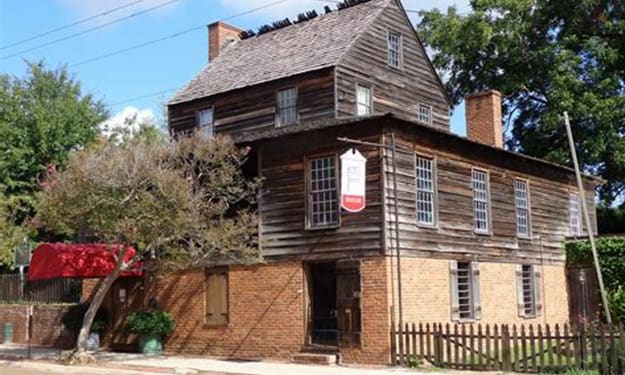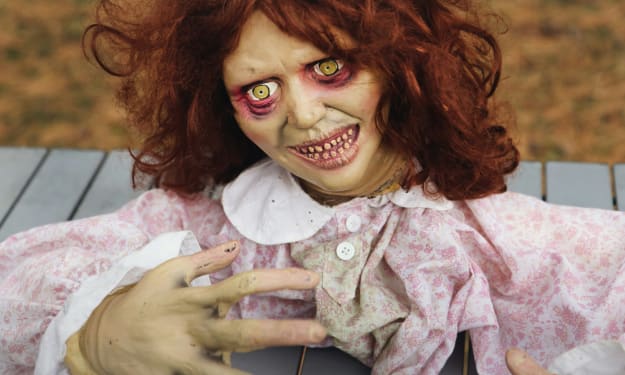
Vampires, those enigmatic creatures of the night, have captured our imaginations for centuries, lurking at the intersection of myth and reality. The stories of these immortal beings, with their thirst for blood and mysterious allure, have woven their way into our cultures, shaping our perceptions of the supernatural. In this comprehensive exploration, we'll delve deep into the origins of vampire myths, the historical events that contributed to their creation, and even uncover the modern-day subculture of individuals who identify as real vampires. Let's separate fact from fiction and shed light on the enigmatic world of vampires.
[Caution: This article is only for educational purposes & it written with the help of AI]
The Ancient Beginnings:
To understand the truth behind vampire legends, we must first travel back in time to their ancient origins. These tales of creatures with a penchant for blood can be found in various cultures across the globe, each contributing unique elements to the lore.
One of the earliest recorded vampire-like beings originates from Eastern European folklore. In these tales, the fear of the undead returning from the grave to quench their thirst for the blood of the living was prevalent. These revenants, as they were known, laid the foundation for the vampire myths that we know today.
In the Balkans, a particularly iconic figure in vampire lore emerged, inspired by the historical figure Vlad the Impaler. This figure would later inspire Bram Stoker's timeless novel, "Dracula," which introduced the world to the charismatic yet terrifying vampire. Dracula's influence on Western literature solidified the image of the vampire as a creature of both fascination and dread.
The Reality of Historical Events:
While the core of vampire legends resides in myth, historical events have contributed significantly to their creation. The past was often marred by disease outbreaks and a limited understanding of medical phenomena, leading to misconceptions that shaped the vampire mythos.
During times of plague and other deadly diseases, communities witnessed the rapid spread of illness and the subsequent deaths of loved ones. Unfamiliar with the true causes of these diseases, people began to attribute the spread to the actions of vampires, believing the undead were responsible for the sudden deaths.
The natural decomposition processes that occur in corpses, such as bloating and the appearance of blood at the mouth, further fueled the belief in vampires rising from the grave. These phenomena, combined with limited scientific knowledge, gave rise to the idea that the dead were returning to life to seek sustenance from the living.
The Modern-Day Vampire Subculture:
While much of vampire mythology remains rooted in ancient tales and historical misunderstandings, there exists a modern subculture of individuals who identify as real vampires. These individuals do not possess supernatural powers, but they share certain commonalities with the vampires of legend.
Modern vampires often claim to have unique needs, such as consuming small amounts of blood or psychic energy from willing donors. These individuals form communities and engage in rituals, reminiscent of the vampire clans of old. It's essential to emphasize that modern vampires do not possess immortality, nor do they transform into bats or engage in other supernatural acts.
The modern vampire subculture offers a safe space for those who identify with the allure of the vampire, fostering a sense of belonging and understanding among its members. While not a replication of the mythical vampire, this subculture highlights the enduring fascination with the archetype and serves as a platform for individuals to explore their unique identities.
Conclusion:
In the realm of vampires, the line between fact and fiction is a fine one, where the allure of the unknown intertwines with historical events and human imagination. The truth behind vampire legends is a tapestry woven with ancient myths, historical misconceptions, and a modern subculture that embraces the fascination with these immortal beings.
While we may not find supernatural creatures with immortality, the power to transform, or an insatiable thirst for blood, the legacy of vampires endures, inviting us to explore the boundaries of the human psyche, the mysteries of history, and the intricate threads that connect us to the extraordinary. Through understanding the reality behind the legends, we gain a deeper appreciation for the ever-evolving world of vampire mythology, where the boundary between the real and the fantastical remains forever fascinating.
Tags:
Vampire myths, Origins of vampire legends, Real vampire, Vampirism, Vampire folklore, Historical context, Vampire subculture, hollywood vampires
are vampires real, john carpenter's vampires, hollywood vampires members, if we were vampires, where do vampires live, vampires and garlic, vampires and werewolves, vampires are real, vampires and silver, vampires and running water, vampires and werewolves movie, vampires and mirrors, vampires adventure time, vampires anime, are the addams family vampires, are vampires real wikipedia, anime about vampires, are vampires immortal, alien vampires, about vampires facts, are vampires in new orleans, a vampire's cape, vampires blood, vampires bedtime, vampires blood incense, vampires bedtime crossword, vampires blood candle, books about vampires, black vampires, bad vampires in twilight






Comments
There are no comments for this story
Be the first to respond and start the conversation.